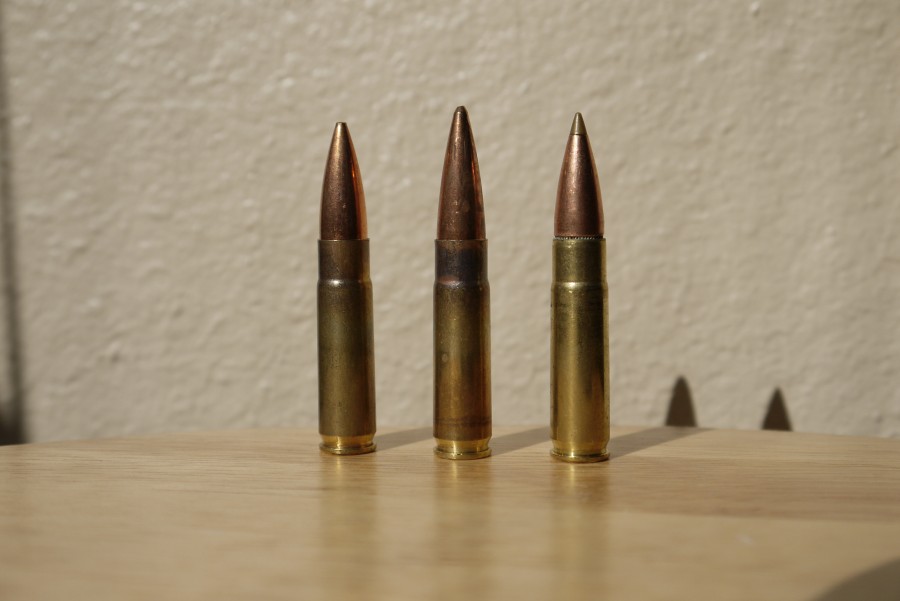
This is a 4-inch port location on a 16-inch barrel. A pistol-length gas system has been, for me, a key to getting fresh-off-the-workbench reliable function from subsonic Blackout.

30-caliber bullet gets put to work effectively because the pressure at the gas port is higher. Done like that, the relatively tiny amount of fast-burning propellant behind that honking. Run a pistol-length location gas port (4 inches ahead of the chamber area) with a carbine-length (16 inch) barrel. I have found that the best overall approach to subsonic function is to shorten gas system length. There’s not enough gas in subsonic, or there’s too much gas in supersonic, for both to function through a system set up more ideally for one or the other. So, despite what I’ve heard from many theorizing, you really can’t run supersonic and subsonic loads through the same gun, without modifications having been made to the gun. It works! Subsonic Architectureįirst, I’m always willing to risk boring knowledgeable readers with basic information, because it’s important to start at the start. Two Blackout barrels: carbine port location on the stainless pistol port location on the other. A 12 gauge slug, on the other hand, over-penetrates. Any bullet that’s built to either fragment or readily expand (not the same things but about the same effect) isn’t going to get far after it meets a solid object. This is really all about bullet design and bullet engineering. If anything, it’s the heavier bullets that are more likely to keep going.

There’s much said, unsubstantiated, about over-penetration of higher-velocity bullets. Just a bit about the whole “defensive-rifle debate”: Some say something like, “5.56 is not a good choice for home defense.” I agree, but not for some reasons commonly given. (Clearly, supersonic Blackout beats it soundly.) 45 ACP is a reliable choice for a defensive round, subsonic Blackout beats it. 45 ACP handgun loading, if we’re going on (the admittedly incomplete) calculated energy figures. 300 Blackout subsonic loads are a little more powerful than a routine. 300 Blackout is plenty powerful, in my estimation, and with radically better shootability than a higher-pressure carbine loading. Most subsonic Blackout ammo uses a bullet in the 200-grain range, and, of course. That’s another debate for others to work though in other articles, but it’s my story and I’m sticking to it. Plus, I’m a believer in “bigger is better” respecting impact effectiveness of a bullet. Subsonic Blackout has a radically milder blast and report than 5.56 or supersonic Blackout. Now, there are some very effective flash suppressors out there, but they don’t take a bit off the noise. In the dark, maybe just up out of bed, and then there’s a blinding fireball and an ear-splitting report, and it’s difficult to recover situational awareness, especially at my age, and even with my rail-mounted light. Good stuff.Ĭivil? I don’t know how many have fired a 5.56 AR-15 carbine inside a room, but it’s sensory overload. Big bullet! My magazines currently hold my most-trusted Nosler 220-grain factory ammo.

I built a specialty AR-15 for home defense that I also featured in recent book project, and that was my choice. One reason for its popularity is the supersonic/subsonic option. Pretty much, it’s for those who want a bigger bullet in an AR-15 with a minimum of technical distractions (some call them problems). I like it especially in the shorter guns, and, around here at least, it’s looked on as an effective Whitetail cartridge choice. 300 Blackout, aka: AAC, is a popular cartridge among AR-15 fans. Oddly the rounds that were over the speed of sound felt like there was more recoil, but on reflection I don't actually think that there was a big difference in the actual recoil, more just in the blast and sound generated.Understatement. BUT then I thought it through and realized that if indeed I was on the border of the sound barrier then it could easily jump back and forth over it. I then mentally berated myself for sloppy loading practices that would allow such large differences in felt recoil and blast. With my elevation and temperature of the range it put these numbers in the vicinity of the speed of sound.Īt first I was wondering if my loads had somehow gotten mixed up with another batch of similar rounds, but quickly discounted that. 2 grains is typical) and I was using two different headstamps on the cases. I've chronograph-ed these before and they come in about 1060, but being Unique it measures rather poorly (+/. These were shot from my model 19 Smith and Wesson. The load that did this was with 158 grain Berry's in. The components used must have been right on the line of the sound barrier and occasionally one would jump over it. Went to the indoor shooting range the other day and as luck would have it the load that I was shooting would go from subsonic to supersonic from round to round.


 0 kommentar(er)
0 kommentar(er)
